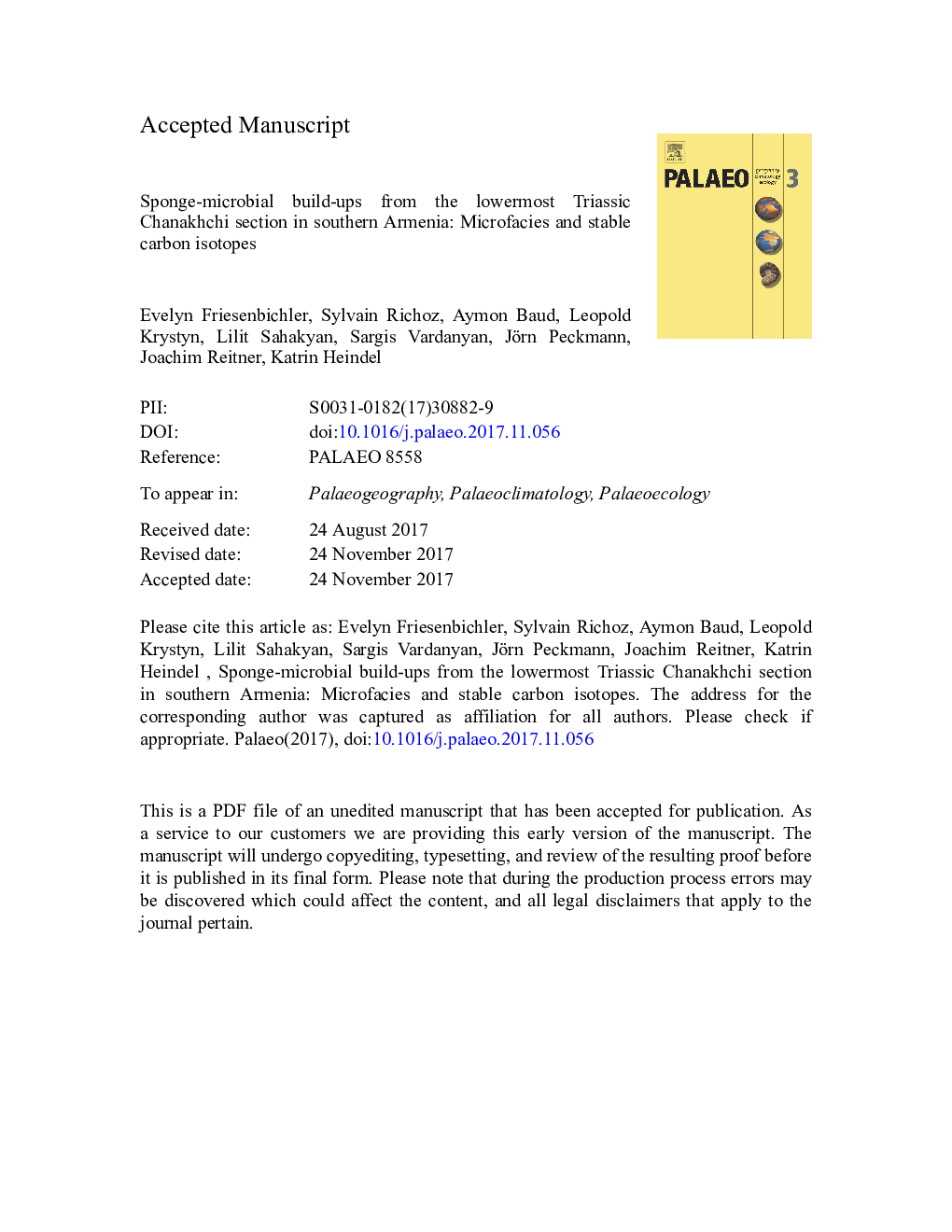| کد مقاله | کد نشریه | سال انتشار | مقاله انگلیسی | نسخه تمام متن |
|---|---|---|---|---|
| 8868490 | 1622102 | 2018 | 64 صفحه PDF | دانلود رایگان |
عنوان انگلیسی مقاله ISI
Sponge-microbial build-ups from the lowermost Triassic Chanakhchi section in southern Armenia: Microfacies and stable carbon isotopes
ترجمه فارسی عنوان
ساخت اسفنج-میکروبی از قسمت پایین ترین بخش تایلر چانخچی در جنوب ارمنستان: میکروسیلیسها و ایزوتوپهای کربن پایدار
دانلود مقاله + سفارش ترجمه
دانلود مقاله ISI انگلیسی
رایگان برای ایرانیان
کلمات کلیدی
میکروبیلیت ها، طرفداران کریستال، بیش از حد، مرز پرمین-تریاس، انقراض جمعی،
موضوعات مرتبط
مهندسی و علوم پایه
علوم زمین و سیارات
فرآیندهای سطح زمین
چکیده انگلیسی
The end-Permian mass extinction was the most severe biotic crisis in Earth's history. In its direct aftermath microbial communities colonized some of the space left vacant after the severe decline of skeletal metazoans. The Permian-Triassic boundary microbialites were peculiarly abundant on low-latitude shallow-marine carbonate shelves of central Tethyan continents. Armenia features particularly well preserved and diverse basal Triassic sponge-microbial build-ups (BTSMBs), which were not studied in detail to date. Here, the Chanakhchi section in southern Armenia is described petrographically and by means of stable isotope analyses. The Armenian BTSMBs formed in a distally open marine setting on a pelagic carbonate ramp in the course of two phases of microbial growth during the Induan (Lower Triassic). The BTSMBs are represented by predominantly thrombolitic but also dendrolitic and digitate stromatolite biostromes and mounds that vary in height between 5 cm to 12 m. The digitate stromatolites are associated with calcium carbonate crystal fans (CCFs). Microfacies analyses revealed that the BTSMBs exhibit a number of different growth forms and internal fabrics. The formation of CCFs was apparently not devoid of biological influence and took place above the sediment surface. The abundance of sponges in the BTSMBs reveals that ecologically complex metazoan-microbial reefs have been present already early after the end-Permian mass extinction. However, the formation of biostromes and mounds did not depend on sponges or other metazoans. BTSMBs that formed during the second microbial growth phase revealed similar δ13C-values like the surrounding sediment. In contrast, the δ13Cmicrobialite and δ13Csediment values from the BTSMBs and CCFs of the first growth phase show a difference of up to + 2.3â°, suggesting a significant influence of photoautotrophy during microbially induced carbonate precipitation.
ناشر
Database: Elsevier - ScienceDirect (ساینس دایرکت)
Journal: Palaeogeography, Palaeoclimatology, Palaeoecology - Volume 490, 15 January 2018, Pages 653-672
Journal: Palaeogeography, Palaeoclimatology, Palaeoecology - Volume 490, 15 January 2018, Pages 653-672
نویسندگان
Evelyn Friesenbichler, Sylvain Richoz, Aymon Baud, Leopold Krystyn, Lilit Sahakyan, Sargis Vardanyan, Jörn Peckmann, Joachim Reitner, Katrin Heindel,
